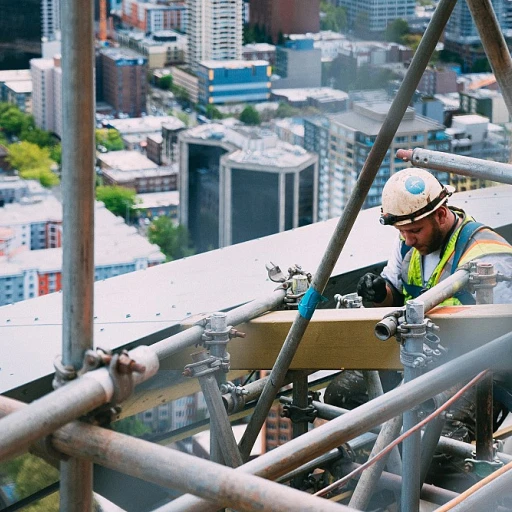
Understanding the Purpose of a Restaurant Homepage
Defining the Intent of a Restaurant Website
A restaurant's homepage serves as the digital face of the dining establishment, playing a pivotal role in shaping the first impression potential diners have when they view the site. The purpose of this page is manifold. Primarily, it acts as a gateway for customers to understand what the restaurant offers — from its signature menu items to the overall dining experience. Essentially, it's a virtual menu board tailored to pique interest.
An effective web design should answer the essentials that a visitor might look for immediately upon landing on the homepage. This includes not only the daily specials or popular dishes but also information about business hours, location, and even online reservations if the restaurant offers such a service. The homepage should encapsulate the ethos of the food and dining experience the establishment promises.
The purpose transcends mere information provision; it's about engagement. A good example of this would be using high-quality images of the restaurant's dishes to entice visual interest. Furthermore, the homepage must guide the visitor smoothly to other parts of the site, whether it’s the online ordering system, a look at the food or menu, or details about upcoming events, via intuitive page design.
Designing your restaurant's website is not merely about flashy graphics; it’s about understanding and catering to visitor expectations. As users skim the homepage, the design should quickly communicate the brand's identity and the quality experience it offers. This sets the stage for the rest of the site, ensuring visitors stay engaged and eager to navigate further into the restaurant website and explore more aspects of the establishment's online presence.
In today's fast-paced digital world, having a responsive layout is crucial. This entails optimizing the web design for various devices, ensuring that the website maintains its functionality whether viewed on a desktop or a mobile device. Check out how responsive design is key to web performance for further insights on creating an engaging and effective restaurant homepage.
Key Elements of an Effective Restaurant Homepage
Essential Components for a Compelling Homepage
Creating an effective restaurant homepage involves more than just aesthetic appeal. It's about crafting an online presence that resonates with your customers and enhances their dining experience. Here are some key elements to consider:
- Clear Navigation: Ensure that visitors can easily find what they're looking for. A well-structured menu bar is crucial, allowing users to quickly access pages like the menu, online ordering, and contact information.
- High-Quality Images: Use professional images of your dishes and restaurant ambiance. This not only showcases your food but also sets the tone for the dining experience you offer.
- Engaging Content: Your homepage should tell a story. Incorporate engaging text that highlights your restaurant's unique selling points, such as special dishes or a renowned chef.
- Call to Action (CTA): Encourage visitors to take action, whether it's making a reservation, ordering online, or signing up for a newsletter. CTAs should be prominently displayed and easy to interact with.
- Social Media Integration: Link your social media profiles to keep customers updated and engaged. This also helps in building a community around your brand.
For more insights on creating unforgettable user experiences, especially on mobile platforms, check out this guide on UX design for mobile.
Designing for User Experience
Crafting a Seamless Online Experience
Designing for user experience is a cornerstone of an effective restaurant homepage. The primary goal is to create a seamless and engaging interaction for visitors, ensuring they find what they're looking for with ease. A well-crafted user experience enhances both the visual appeal and functionality of the site, ultimately fostering a positive impression of the restaurant's brand in the digital space. Firstly, prioritize intuitive navigation. Good restaurant website design should guide visitors effortlessly through your homepage, directing them to key sections such as the menu, booking options, or contact information. Utilize a clear menu bar across the top of the page, incorporating dropdowns for any sub-categories. This simplicity ensures that customers can swiftly view food options and make decisions, enticing them to proceed with their dining choices or bookings. Another vital aspect is loading speed. A slow-loading site can deter visitors, leading them to exit before fully exploring the offerings. Optimize image files of dishes to maintain high quality while ensuring fast loading times. This balance of swift load times with visually appealing, high-resolution images creates an optimal viewing experience that keeps visitors engaged. Effective use of calls to action (CTAs) must also be integrated into the restaurant homepage. Whether you encourage users to explore your diverse menu, make a reservation, or interact with your social media pages, prominent and clear CTAs keep the customer's journey moving forward and focused on the end goal. For a deeper understanding of how to enhance the overall user experience on your restaurant website, you can explore more here. This resource expands on strategies to foster a user-centric approach, ensuring your site's design not only draws users in but effectively converts visits into valuable engagements. Ultimately, these design elements of user experience contribute significantly to establishing a strong online presence and reflecting the quality of the dining experience your restaurant offers in real life.Incorporating Brand Identity into Design
Infusing Your Brand's Essence into the Design
When it comes to crafting a compelling restaurant website, one of the most crucial aspects is ensuring that your brand identity is seamlessly woven into the design. This not only helps in creating a memorable online presence but also enhances the dining experience for your visitors even before they step foot into your establishment.
To achieve this, start by clearly defining what your brand stands for. Is it a cozy, family-friendly diner, or a high-end gourmet destination? Understanding your brand's core values and unique selling points will guide your design choices, from color schemes to typography.
Consider the following elements to effectively incorporate your brand identity:
- Color Palette: Choose colors that reflect your restaurant's ambiance and style. A vibrant palette might suit a lively bistro, while muted tones could be ideal for a fine dining experience.
- Typography: Fonts can convey a lot about your brand. A playful font might work well for a casual eatery, whereas a sleek, modern typeface could be better for an upscale restaurant.
- Imagery: Use high-quality images that showcase your dishes and dining environment. This not only attracts customers but also sets the tone for what they can expect.
- Logo Placement: Ensure your logo is prominently displayed on the homepage. It should be easily recognizable and consistent across all pages.
- Menu Design: The menu is a critical part of your restaurant's identity. Ensure it's easy to view online and reflects the style of your physical menu.
By focusing on these elements, you create a cohesive and engaging homepage that resonates with your target audience. This approach not only strengthens your brand's identity but also enhances the overall user experience, encouraging visitors to explore further and potentially convert into loyal customers.
Responsive Design and Mobile Optimization
Ensuring Seamless Interaction Across Devices
When designing a restaurant homepage, it's crucial to ensure that the experience is consistent and enjoyable across all devices. This involves the development of a responsive design, which adapts seamlessly whether visitors access your website from desktops, tablets, or smartphones. Here’s how you achieve that:- Fluid Grids: Embrace a flexible grid system that adjusts elements proportionally. This ensures your web content, including images and text, resizes to fit different screens without losing coherence.
- Flexible Images: Involve techniques such as CSS to guide image proportions according to the device screen size. Visitors enjoy a cohesive dining experience when they can clearly view images of your dishes, even on smaller screens.
- Prioritize Mobile Optimization: With more customers browsing websites on mobile devices, particularly for quick online ordering or checking the menu, the need for mobile optimization cannot be overstated. A mobile-optimized homepage will improve your chances of converting visitors into paying customers.
- Minimize Load Times: Slow page load times can frustrate users, especially on mobile networks. Ensure your restaurant homepage has optimized code and reduced image sizes to provide a fast, responsive experience.
Utilizing Analytics to Improve Homepage Performance
Gathering Insights for Continuous Improvement
Utilizing analytics is crucial for a restaurant website to evolve and enhance user experience. As dining habits and online preferences change, ensuring the homepage adapts appropriately means continuously gathering insights and using them effectively.
To optimize a restaurant homepage's performance, one can rely on analytics tools to gain valuable insights into how visitors interact with the website. These insights can reveal, for example, which dishes on the menu attract the most attention or which images entice potential customers to explore further. By analyzing these patterns, restaurants can adjust their strategies to cater to customer preferences better.
Key performance metrics to monitor include:
- Page Views: Track which sections of the site get the most attention. This can inform decisions on which content deserves more prominence.
- Bounce Rate: A high bounce rate might suggest that the homepage isn’t capturing interest effectively. Understanding which pages lead to exits can highlight areas for improvement.
- Conversion Rate: Vital for assessing how well the homepage turns visitors into customers, especially if online ordering is involved.
- Visitor Journey: Mapping out how users navigate through the site can uncover unexpected paths and drop-off points, suggesting areas to streamline for a smoother user experience.
Incorporating these analytics not only aids in refining the homepage but also strengthens the overall online presence of the restaurant. A high-quality restaurant web design allows for these changes to be implemented seamlessly, improving both the website's effectiveness and the dining experience offered to customers.















